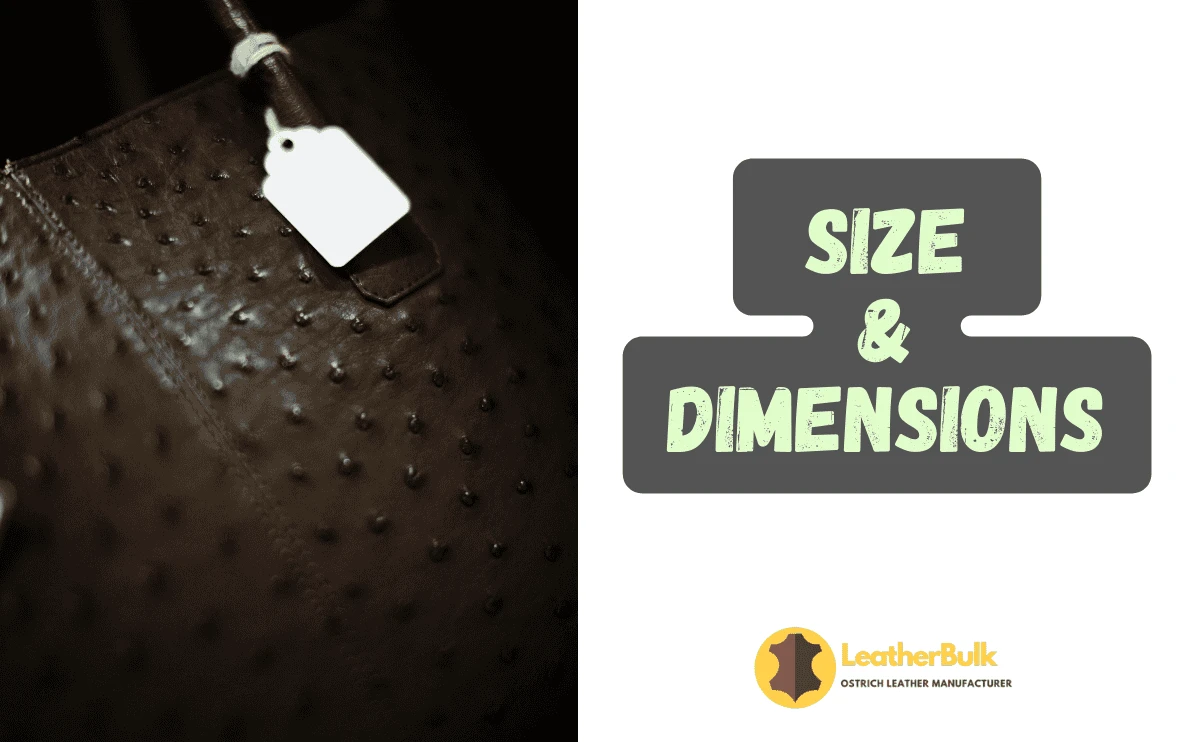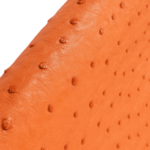Understanding the Size and Dimensions of Ostrich Leather: Body & Leg

When sourcing exotic leather, especially in bulk, understanding the size and usable area is more than just a technical detail—it directly impacts your product planning, pricing, and production yield. With ostrich leather, the size varies depending on the part of the animal and the intended use. In this article, we'll break down the dimensions of ostrich body leather and ostrich leg leather so that you can make informed purchasing decisions.
Ostrich Body Leather: Average Size and Usable Area
The main body hide of an ostrich is the most valued part, especially the quill area—the central section where the characteristic bumps or follicles are most pronounced.
- Average size per hide: 12 to 16 square feet (around 1.1 to 1.5 square meters)
- Usable area: Typically, 10 to 13 square feet, depending on the grade and cut
- Shape: Oval or circular, with the central quill zone in the middle
- Thickness: Ranges between 1.2 mm and 1.8 mm, depending on tanning and finishing
Because ostriches are smaller than cattle, and the hide isn't rectangular, there's naturally some waste during cutting. However, the softness, durability, and texture of ostrich body leather more than make up for it, especially for high-end goods.
Ideal Use for Body Leather
Due to its premium look and feel, body leather is often used for:
- Luxury handbags
- Wallets and cardholders
- Footwear uppers
- Automotive and furniture inlays
- Belts and accessories
If you're working on products that need both beauty and strength, this is the cut to focus on.
Ostrich Leg Leather: Small but Mighty
While the leg leather is much smaller in size, it's highly valued for its unique reptile-like texture and natural scaling. No two pieces look the same, and many artisans love it for that reason.
- Average size per leg skin: 25 to 35 cm in length
- Usable area: Roughly 0.4 to 0.6 square feet (or about 4 to 6 decimeters²) per leg
- Shape: Long and narrow, ideal for detailed or narrow applications
- Thickness: Slightly thicker and stiffer than body leather, typically 1.5 mm to 2.0 mm
Because of its scale pattern, leg leather is often used where visual impact matters. Despite its size, it's a favorite for smaller luxury items.
Common Applications for Leg Leather
- Watch straps
- Small leather goods like key holders and coin purses
- Boot and shoe inlays
- Trim and detail work on handbags or wallets
It's not unusual for premium brands to combine body and leg leather in a single product—for example, using the body leather for the main surface and the leg leather as a bold accent.
What Buyers Should Keep in Mind?
If you're buying ostrich leather for manufacturing or resale, here are a few size-related tips to consider:
- Ask for precise measurements. Some suppliers quote the full hide size, while others mention the usable area. Clarify to avoid surprises.
- Check for consistency. Especially when buying multiple hides or legs, ensure there's minimal size variation if uniformity matters for your production.
- Factor in waste. Unusual shapes and natural defects may reduce your actual yield. Plan accordingly.
- Don't overlook the legs. While small, they can add real visual value to your product line without inflating costs.
Final Thoughts
Ostrich leather isn't just about luxury—it's also about working smart with what you have. Knowing the average sizes of body and leg hides helps you plan better, reduce waste, and deliver consistent product quality.
Whether you're crafting high-end handbags or assembling limited-edition watch straps, understanding the dimensions of ostrich leather is key to success.
Al Quoz Industrial Area, United Arab Emirates



